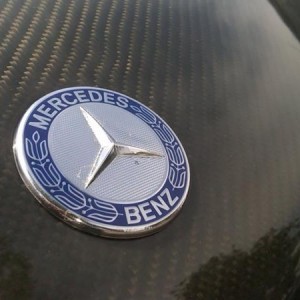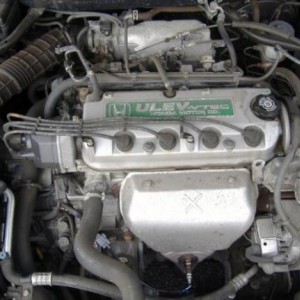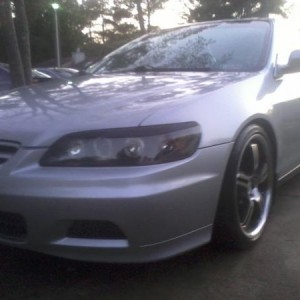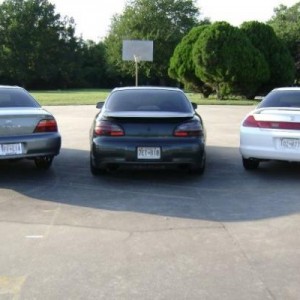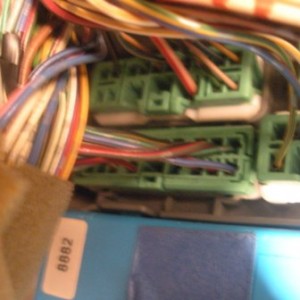You are using an out of date browser. It may not display this or other websites correctly.
You should upgrade or use an alternative browser.
You should upgrade or use an alternative browser.
99 Sedan 3.0 V6 P0740
- Thread starter Maxswell
- Start date
A quick Google search...
P0740 - OBD-II Trouble Code
Auto Systems and Repair
Torque Converter Lockup Malfunction
Our emissions expert has put together the following information about the P0740 fault code. We have also included diagnostic procedures you can take to your repair shop if the mechanic is having difficulty analyzing the code.
OBD II Fault Code
OBD II P0740
Fault Code Definition
Torque Converter Lockup Malfunction
Symptoms
Check Engine Light will illuminate
Vehicle will not shift into the highest gear at freeway speed
Decrease in fuel economy
In unusual cases, there are no adverse conditions noticed by the driver
In some cases, there may be performance problems, such as dying when coming to a stop after driving on the freeway and/or misfire-like symptoms
Common Problems That Trigger the P0740 Code
Defective Torque Converter Lockup Solenoid
Defective Engine Coolant Temperature Sensor
Defective Torque Converter Clutch
Defective Valve Body
Dirty transmission fluid that restricts the hydraulic passages
Common Misdiagnoses
Engine Misfire problem
Internal Transmission problem
Driveline problem
Polluting Gases Expelled
HCs (Hydrocarbons): Unburned droplets of raw fuel that smell, affect breathing, and contribute to smog
CO (Carbon Monoxide): Partially burned fuel that is an odorless and deadly poisonous gas
NOX (Oxides of Nitrogen): One of the two ingredients that, when exposed to sunlight, cause smog
Want to Learn More?
The purpose of the Torque Converter Lockup Clutch is to create a 1 to 1 RPM ratio between the Transmission Input Shaft and the rotational speed of the Torque Converter so that a manual transmission-like, "mechanical lock" between the engine and the transmission is established. This eliminates any loss of power that might occur with the fluid and/or hydraulic "lock" that you would experience with a conventional Torque Converter. This is achieved with a friction plate and a friction disc inside the Torque Converter housing that are applied with hydraulic pressure. This hydraulic pressure is supplied by way of a fluid passage in the center of the Transmission Input Shaft, which rests inside the center area of the Torque Converter. A dedicated Torque Converter Lockup Solenoid Valve on the Transmission Valve Body is energized by the Powertrain Computer in order to supply the hydraulic pressure that applies the Lockup Clutch when the proper road speed and engine temperature are achieved. Because the engine will be operating with reduced speed and load, overall fuel consumption and emissions output will be reduced.
P0740 Diagnostic Theory for Shops and Technicians
When the code P0740 is set in the Powertrain Computer, it means that the Powertrain Computer or PCM is seeing greater than a 200 RPM difference between the rotational speed of the Torque Converter and the Transmission Input Shaft. When the Torque Converter Lockup Clutch engages, there should be a 1 to 1 ratio between the Converter RPM and the Input Shaft RPM.
When diagnosing a P0740 code, it is important to record the freeze frame information and then to duplicate the code setting conditions with a test drive above 45 MPH. Pay close attention to the engine load, throttle position, RPM, and road speed because a P0740 can be difficult to detect.
One should monitor the Converter RPM and compare that to Input Shaft speed RPM at greater than 45 MPH on a smooth, flat surface after the vehicle is warmed up and the fuel system is in a closed loop. Monitor how the Converter Lockup Solenoid responds to an increased amount of throttle. The Lockup Solenoid duty cycle should go to 0 percent when the Throttle Position Sensor is above 40 percent and should return to 100 percent when the throttle is returned back to 15 to 20 percent. The duty cycle should go to 0 percent whenever the throttle is fully released and the vehicle has decelerated below 30 MPH. The Lockup Solenoid duty cycle should go to 0 percent whenever the brake pedal is applied, regardless of speed.
When looking at the Toque Converter RPM versus the Input Shaft RPM, observe if the scan tool data has a Converter Slip Speed PID or Parameter Identification. This can be very helpful in the diagnosis of an intermittent P0740. If the Lockup System is functioning correctly, the Slip Speed value should never be above 50 RPM. Try gently depressing the throttle on a gradual incline above 45 mph. When doing this, the Slip Speed should not increase. If it does and the Lockup Solenoid duty cycle is 100 percent—meaning it is fully applying the converter clutch—then you know you have a slipping Converter Clutch.
If the Slip Speed stays steady but the transmission Output Shaft Speed starts to decrease (along with the MPH), then you know that you have an internally slipping transmission, usually caused by worn Clutch Packs or Sprag 1-Way clutches. If the Slip Speed remains very high and the Lockup duty cycle is 100 percent, then it is likely that the Solenoid is defective, because the duty cycle is reporting that the PCM is commanding the Lockup System to apply, but there is no change. Even with worn out Converter Clutches, there is always some kind of Slip Speed reading. It may go very high whenever the throttle is applied, but there should be some kind of a RPM reduction between the Converter Speed and the Input Shaft speed that verifies the Lockup Solenoid and PCM are trying to do their jobs.
P0740 - OBD-II Trouble Code
Auto Systems and Repair
Torque Converter Lockup Malfunction
Our emissions expert has put together the following information about the P0740 fault code. We have also included diagnostic procedures you can take to your repair shop if the mechanic is having difficulty analyzing the code.
OBD II Fault Code
OBD II P0740
Fault Code Definition
Torque Converter Lockup Malfunction
Symptoms
Check Engine Light will illuminate
Vehicle will not shift into the highest gear at freeway speed
Decrease in fuel economy
In unusual cases, there are no adverse conditions noticed by the driver
In some cases, there may be performance problems, such as dying when coming to a stop after driving on the freeway and/or misfire-like symptoms
Common Problems That Trigger the P0740 Code
Defective Torque Converter Lockup Solenoid
Defective Engine Coolant Temperature Sensor
Defective Torque Converter Clutch
Defective Valve Body
Dirty transmission fluid that restricts the hydraulic passages
Common Misdiagnoses
Engine Misfire problem
Internal Transmission problem
Driveline problem
Polluting Gases Expelled
HCs (Hydrocarbons): Unburned droplets of raw fuel that smell, affect breathing, and contribute to smog
CO (Carbon Monoxide): Partially burned fuel that is an odorless and deadly poisonous gas
NOX (Oxides of Nitrogen): One of the two ingredients that, when exposed to sunlight, cause smog
Want to Learn More?
The purpose of the Torque Converter Lockup Clutch is to create a 1 to 1 RPM ratio between the Transmission Input Shaft and the rotational speed of the Torque Converter so that a manual transmission-like, "mechanical lock" between the engine and the transmission is established. This eliminates any loss of power that might occur with the fluid and/or hydraulic "lock" that you would experience with a conventional Torque Converter. This is achieved with a friction plate and a friction disc inside the Torque Converter housing that are applied with hydraulic pressure. This hydraulic pressure is supplied by way of a fluid passage in the center of the Transmission Input Shaft, which rests inside the center area of the Torque Converter. A dedicated Torque Converter Lockup Solenoid Valve on the Transmission Valve Body is energized by the Powertrain Computer in order to supply the hydraulic pressure that applies the Lockup Clutch when the proper road speed and engine temperature are achieved. Because the engine will be operating with reduced speed and load, overall fuel consumption and emissions output will be reduced.
P0740 Diagnostic Theory for Shops and Technicians
When the code P0740 is set in the Powertrain Computer, it means that the Powertrain Computer or PCM is seeing greater than a 200 RPM difference between the rotational speed of the Torque Converter and the Transmission Input Shaft. When the Torque Converter Lockup Clutch engages, there should be a 1 to 1 ratio between the Converter RPM and the Input Shaft RPM.
When diagnosing a P0740 code, it is important to record the freeze frame information and then to duplicate the code setting conditions with a test drive above 45 MPH. Pay close attention to the engine load, throttle position, RPM, and road speed because a P0740 can be difficult to detect.
One should monitor the Converter RPM and compare that to Input Shaft speed RPM at greater than 45 MPH on a smooth, flat surface after the vehicle is warmed up and the fuel system is in a closed loop. Monitor how the Converter Lockup Solenoid responds to an increased amount of throttle. The Lockup Solenoid duty cycle should go to 0 percent when the Throttle Position Sensor is above 40 percent and should return to 100 percent when the throttle is returned back to 15 to 20 percent. The duty cycle should go to 0 percent whenever the throttle is fully released and the vehicle has decelerated below 30 MPH. The Lockup Solenoid duty cycle should go to 0 percent whenever the brake pedal is applied, regardless of speed.
When looking at the Toque Converter RPM versus the Input Shaft RPM, observe if the scan tool data has a Converter Slip Speed PID or Parameter Identification. This can be very helpful in the diagnosis of an intermittent P0740. If the Lockup System is functioning correctly, the Slip Speed value should never be above 50 RPM. Try gently depressing the throttle on a gradual incline above 45 mph. When doing this, the Slip Speed should not increase. If it does and the Lockup Solenoid duty cycle is 100 percent—meaning it is fully applying the converter clutch—then you know you have a slipping Converter Clutch.
If the Slip Speed stays steady but the transmission Output Shaft Speed starts to decrease (along with the MPH), then you know that you have an internally slipping transmission, usually caused by worn Clutch Packs or Sprag 1-Way clutches. If the Slip Speed remains very high and the Lockup duty cycle is 100 percent, then it is likely that the Solenoid is defective, because the duty cycle is reporting that the PCM is commanding the Lockup System to apply, but there is no change. Even with worn out Converter Clutches, there is always some kind of Slip Speed reading. It may go very high whenever the throttle is applied, but there should be some kind of a RPM reduction between the Converter Speed and the Input Shaft speed that verifies the Lockup Solenoid and PCM are trying to do their jobs.
BlkCurrantKord
Super Moderator
All models with A/T except Passport
Before you replace the transmission for DTC P0740 (lock-up control system) or for delayed engagement after sitting overnight, inspect the O-ring on the snout of the torque converter. If it’s damaged or missing, replace it and clear the DTC. Usually a new O-ring is all you need to fix the transmission.
Before you replace the transmission for DTC P0740 (lock-up control system) or for delayed engagement after sitting overnight, inspect the O-ring on the snout of the torque converter. If it’s damaged or missing, replace it and clear the DTC. Usually a new O-ring is all you need to fix the transmission.
BlkCurrantKord
Super Moderator
I can look up the rest of the diagnostics through work but thought I'd throw the cheap one at you first.
91302-P7A-003 - $3.00 at the dealer for the o-ring on the TC
91302-P7A-003 - $3.00 at the dealer for the o-ring on the TC



